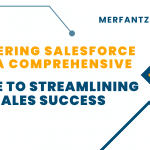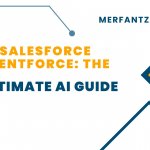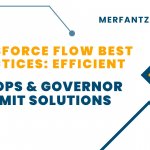Imagine this: your business is sitting on a goldmine of customer data—sales records, service interactions, marketing campaigns, website clicks, and more. But here’s the catch—it’s scattered across dozens, maybe hundreds, of systems. Sound familiar? For most companies, this fragmented data reality is a daily headache. Enter Salesforce Data Cloud, a game-changer that’s redefining how businesses harness their data to drive growth, personalize experiences, and power AI like never before.
What Is Salesforce Data Cloud, Anyway?
At its core, Salesforce Data Cloud is a hyperscale data platform built right into the Salesforce ecosystem. Think of it as the glue that binds all your customer data together, no matter where it lives—whether it’s in Salesforce apps like Sales Cloud or Service Cloud, external data lakes like Snowflake, or even unstructured sources like emails and PDFs. It’s not just a fancy database; it’s a real-time engine that unifies structured and unstructured data into a single, actionable view of your customer.
Originally launched as Salesforce CDP (Customer Data Platform) and briefly known as Salesforce Genie, it’s evolved into something much bigger. Today, Data Cloud is the fastest-growing organic product in Salesforce’s history, processing trillions of records daily to help businesses break down silos and turn raw data into real-time insights.
Why It Matters: The Data Struggle Is Real
Let’s face it—data is the lifeblood of modern business, but managing it is a nightmare. A Salesforce study once pegged the average company as juggling 928 different systems. That’s 928 potential points of disconnect! Sales teams might see one version of a customer, while marketing sees another, and service yet another. The result? Missed opportunities, frustrated customers, and a lot of wasted time.
Data Cloud tackles this head-on with a concept called the “Unified Profile.” It’s like a master keyring that connects all those scattered data points—think purchase history, support tickets, and social media activity—into one 360-degree customer view. And it does this in real time, thanks to its lakehouse architecture (a hybrid of data lake and warehouse) that eliminates the need for clunky, outdated pipelines.
Salesforce Data Cloud is a powerful platform designed to unify and activate customer data at scale, enabling businesses to create personalized experiences, streamline operations, and drive actionable insights. As organizations increasingly rely on data to fuel their strategies, Data Cloud provides a robust framework to ingest, store, model, and leverage data effectively. However, to fully grasp how Data Cloud works, it’s essential to understand some of its core terms and acronyms. In this blog, we’ll dive into the key concepts—Data Stream, Data Lake Object (DLO), Data Model Object (DMO), Customer 360 Data Model, and Starter Data Bundles—and explore how they fit into the Data Cloud ecosystem.
Data Stream: The Entry Point for Data
A Data Stream is the foundational building block of Salesforce Data Cloud. It refers to any data source that is ingested into the platform. Think of it as a pipeline that brings raw data from various systems—such as Salesforce CRM, external databases, marketing platforms, or third-party applications—into Data Cloud for processing.
Data Streams are highly flexible and can handle structured, semi-structured, or unstructured data. Once ingested, this data becomes available for further transformation and analysis within Data Cloud. For example, a Data Stream might pull in customer purchase history from an e-commerce platform or interaction data from a social media tool. The ability to connect and ingest diverse data sources is what makes Data Cloud a central hub for unifying an organization’s data.
Data Lake Object (DLO): Storing the Raw Data
After data is ingested via a Data Stream, it needs a place to reside. That’s where the Data Lake Object (DLO) comes in. A DLO is essentially a storage container within Data Cloud’s data lake architecture, designed to hold the raw, unprocessed data brought in from Data Streams.
The data lake approach allows organizations to store massive volumes of data in its native format without requiring immediate structuring or transformation. This flexibility is key for businesses dealing with large, complex datasets. For instance, a DLO might store customer clickstream data, transaction logs, or IoT sensor readings. By keeping this data in a centralized, scalable repository, Data Cloud ensures it’s readily available for downstream processing and modeling.
Data Model Object (DMO): Turning Raw Data into Usable Insights
While DLOs store raw data, the Data Model Object (DMO) takes things a step further by transforming that data into a structured, usable format. DMOs are Data Cloud objects created by mapping and enriching data from Data Streams, insights, or other sources.
DMOs are the bridge between raw data and actionable business objects. They allow organizations to define relationships, standardize fields, and create a cohesive view of their data. For example, a DMO might combine customer profile data from a Data Stream with behavioral insights from an analytics tool to create a unified “Customer” object. This structured data can then be used for reporting, segmentation, or powering real-time customer experiences.
Customer 360 Data Model: The Standard Blueprint
At the heart of Data Cloud’s data modeling capabilities is the Customer 360 Data Model. This is Salesforce’s standardized, canonical data model that provides a pre-built framework for organizing customer-related data. When data is ingested into Data Cloud, it’s mapped to DMOs that align with the Customer 360 Data Model, ensuring consistency and interoperability across the platform.
The Customer 360 Data Model is designed to represent a holistic view of the customer, covering entities like individuals, accounts, contacts, interactions, and transactions. For instance, it might define how a customer’s email address, purchase history, and support tickets are linked together. By adhering to this standard, businesses can accelerate implementation, reduce custom modeling efforts, and ensure their data aligns with Salesforce’s broader ecosystem, including tools like Sales Cloud, Service Cloud, and Marketing Cloud.
Starter Data Bundles: A Head Start on Data Integration
For organizations looking to hit the ground running, Salesforce offers Starter Data Bundles. These are predefined Data Streams that come with built-in mappings to the Data Cloud DMO structure, based on the Customer 360 Data Model. Essentially, they’re ready-to-use templates that simplify the process of ingesting and modeling common data sources.
Starter Data Bundles are particularly valuable for businesses that want to integrate Salesforce-native data (e.g., Sales Cloud or Service Cloud records) or popular external systems without starting from scratch. For example, a Starter Data Bundle might include a preconfigured Data Stream for importing account and opportunity data, complete with mappings to the appropriate DMOs. This accelerates time-to-value and ensures best practices are baked into the setup.
See how FieldAx can transform your Field Operations.
Try it today! Book Demo
You are one click away from your customized FieldAx Demo!
Conclusion:
Salesforce Data Cloud is revolutionizing the way businesses manage and leverage their customer data, offering a powerful solution to the all-too-common problem of fragmented systems and siloed information. By bringing together diverse data sources through Data Streams, storing raw data in Data Lake Objects (DLOs), and transforming it into actionable insights with Data Model Objects (DMOs), Data Cloud creates a unified, real-time view of the customer. The Customer 360 Data Model provides a standardized foundation for consistency and scalability, while Starter Data Bundles offer a fast track to implementation, making it easier than ever for organizations to get started.
In a world where data is both a goldmine and a challenge, Salesforce Data Cloud stands out as a game-changer. It empowers businesses to break down barriers, personalize customer experiences, and fuel AI-driven strategies—all while keeping pace with the demands of a fast-moving digital landscape. Whether you’re looking to streamline operations, unlock deeper insights, or drive growth, Data Cloud offers the tools and framework to turn your data into a competitive advantage. The future of customer-centric business is here, and it’s unified, scalable, and ready to deliver results.




